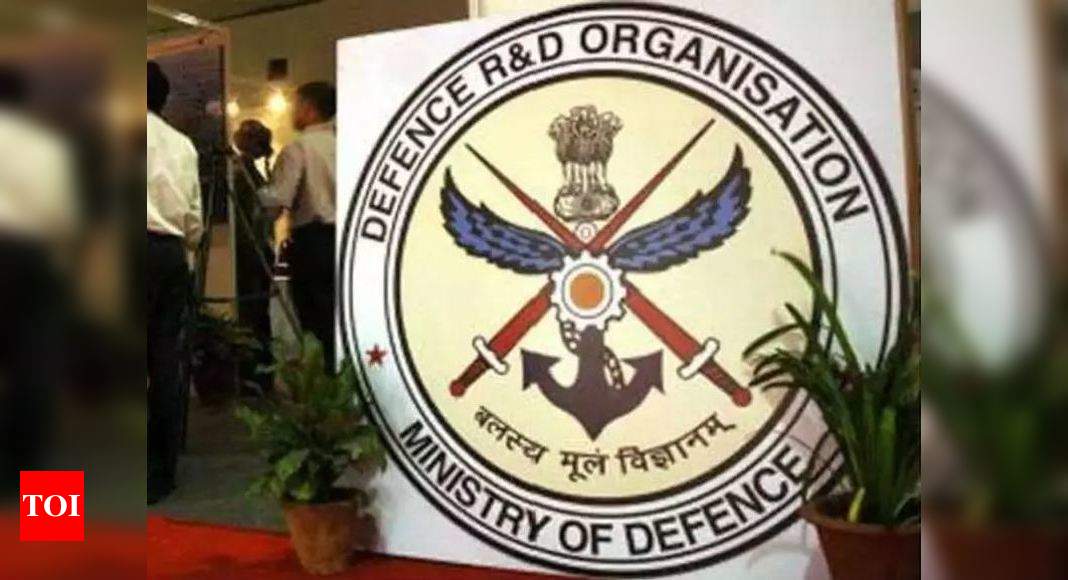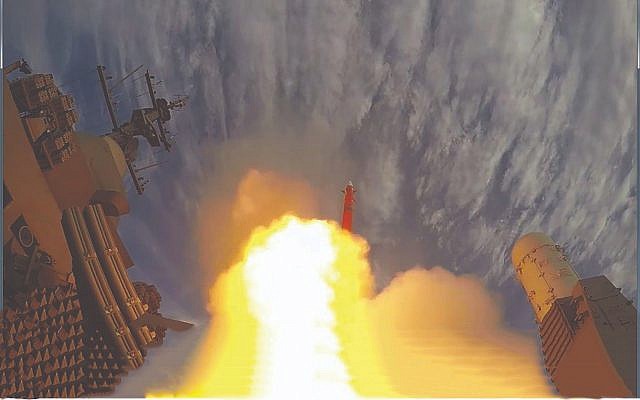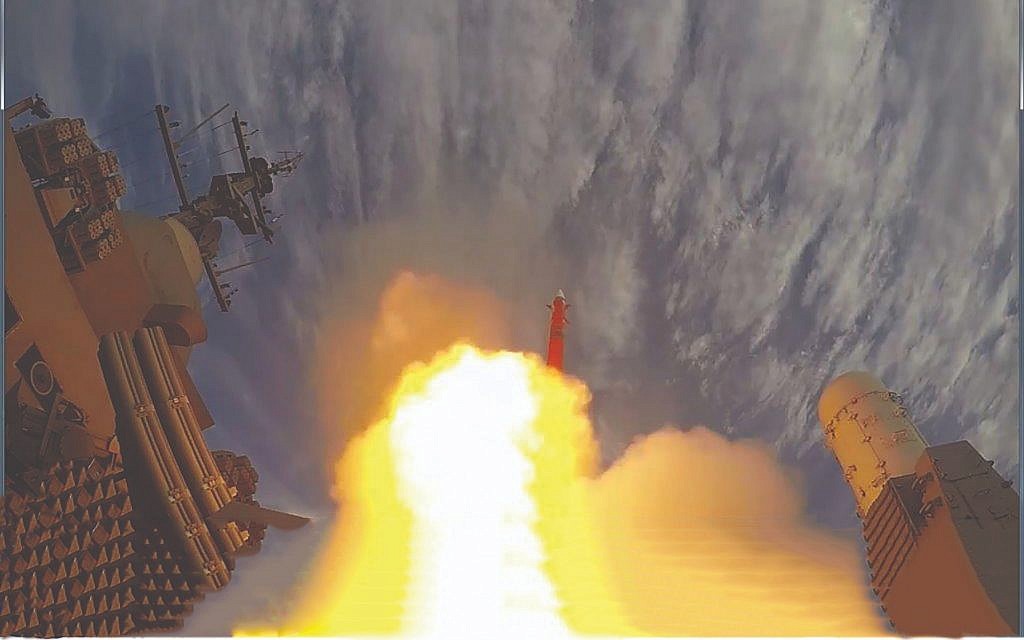In Jan 2021, India tested its brand new Akash NG (New Generation) program. Name apart, this is a radically new system which overhauls the entire Akash architecture and has little resemblance to its predecessor. It offers the IAF a totally Indian replacement for the MRSAM joint venture (Barak-8 being the purely Israeli variant). The MRSAM depends on a high degree of imported subsystems like its radar and seeker, which can't be rapidly reconfigured without Israeli involvement. Judging by its revealed architecture and system details, the Akash NG will likely have equivalent or even better performance than the MRSAM. As can be expected, IAF representatives were present during the trial. The Akash NG features DRDO's dual pulse rocket motor too, a powerful seeker (approximately 2x the performance of that on the Astra Mk1, QRSAM), and is specifically tailored for low Radar Cross Section threats. The threat class also indicates it will field DRDO's new laser fuse. Intercepting highly maneuvering targets is where the Dual Pulse motor will be particularly useful. The seeker can target velocities up to the SRBM class clearly indicating a limited TMD role, similar to that of the Barak-8. Considering a missile/ rocket barrage is an increasing threat for many forward IAF bases, this is a useful capability to have.
Unlike the MRSAM, this is not a vertical launch system. There are tradeoffs here. On the one hand the missile need not carry excess weight in the form of thrust vector control or a nose cone with motors to slew it (Brahmos style, and which would impede lock on before launch), implying better range. A slant /turntable mechanism would give it better reaction times too. However dealing with multi axis surge attacks would be a challenge unless DRDO had each launcher address a sector independently. This is exactly what they have done.
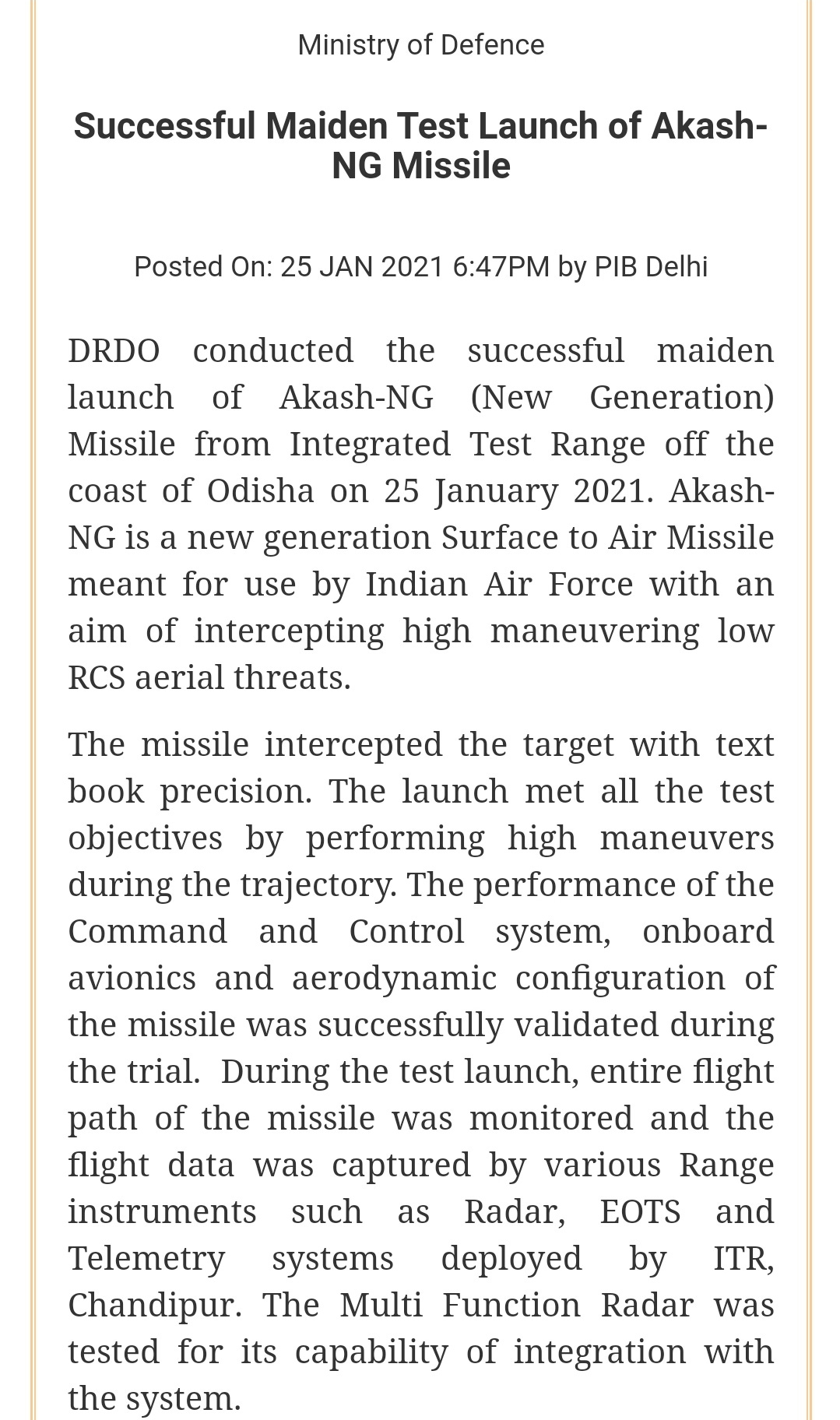
Take a quick look at the image above after reading the press release. What you see is India's
first combined Radar and Launcher setup beyond the short range Trishul program. The image clearly shows a 4 panel AESA Multi Function radar setup, similar to that developed for the QRSAM program.
Towards the rear, behind the initial smoke plume, you can see another slanted panel. So 360 degree coverage, with the thinner strip panels for IFF. The radar in all likelihood will be more powerful than that on the QRSAM. It has to be, as the Akash NGs envelope will be around 2.5-3x that of the QRSAM’s. The radar has to look and guide further.
In short, unless this is a test setup alone (which doesn't seem likely, why go to all that trouble for this configuration) each Akash NG can have an independent battery by itself, mobile and lethal. It can relocate on its own and unlike comparable Russian systems, the radar is fully multi-function with limited dependence on its Surveillance Radar beyond Early Warning. It is also AESA, something the Russians are yet to broadbase on their SAM systems.
Given the radars capacity, it wouldn't be beyond DRDO to pair this radar with independent launchers too. They'd complement the units with the radar-missile mix. Perhaps, operating as launchers plus loaders with spare missiles.
All in all, there are many interesting possibilities in play if DRDO chooses to go ahead with this configuration.
We can also expect future variants of this radar to have an EO pod with a long range thermal Imager, day camera and a long range laser finder as a back up to the radar allowing it to mount nearly undetectable attacks (very few fighters have laser warning systems). Again, similar to the QRSAM system.
While colocating the radar and missiles may open up their vulnerability to Anti Radiation Missiles, these are AESA systems, not easy to track or counter. Remote operation would be possible and knocking out a radar merely takes one launcher off the table. In the MRSAM architecture, unless there are backups, the single radar is the key FCR for its launchers. With the Akash NG, targeting a single radar is not enough to shut down a multi-launcher threat, each with its own sensors.
In short, this is a much more lethal system. And all this in a compact footprint as DRDO notes.
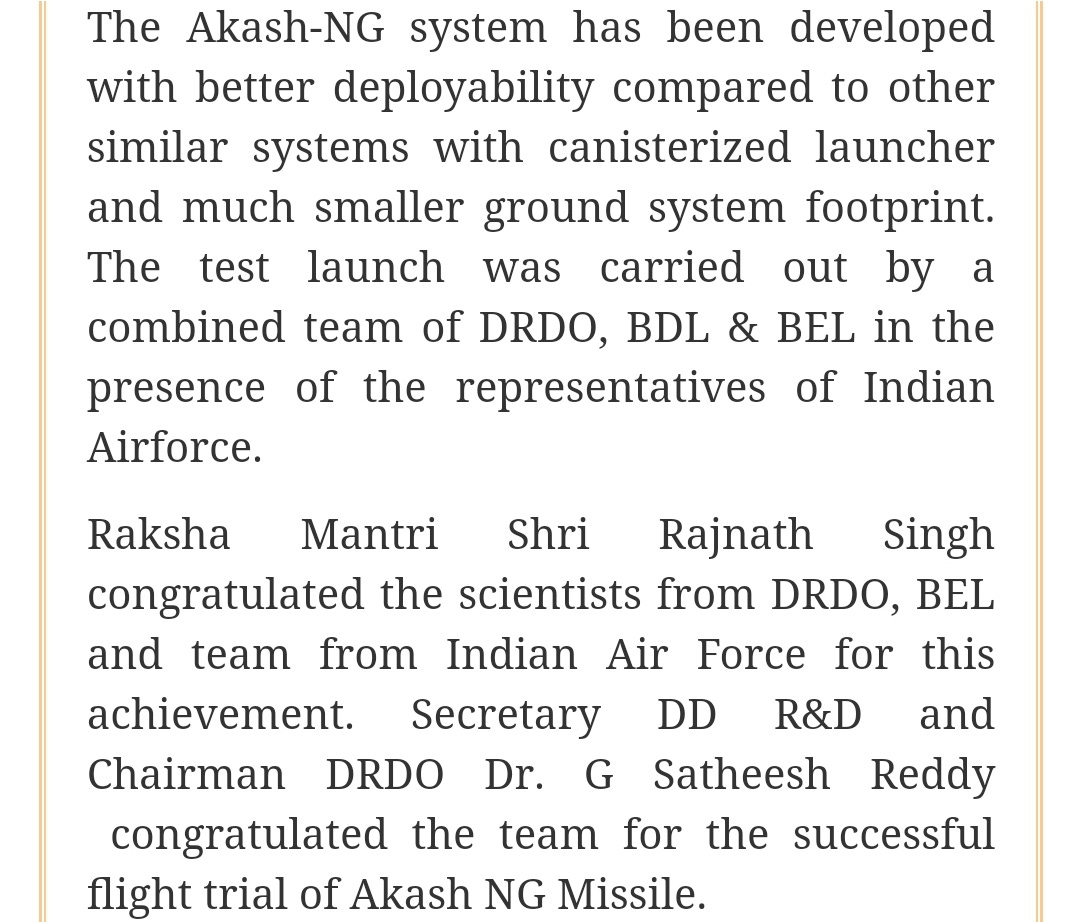
In the next iteration we will likely see the Akash NGs AESA Based long range surveillance radar too. Via a command post the whole setup will be linked to the IAFs IACCS, with engagement efficacy being dramatically boosted by access to the IAFs wider sensor network.
Overall, the Akash NG program offers India a very capable and credible alternative to reliance on imported systems, which come with more restrictions and can't be rapidly reconfigured to Indian requirements. The IAF would be well served to induct it, and have DRDO develop more variants for enhanced range profiles and threat classes.
A few quick thoughts..

firestarter.substack.com







